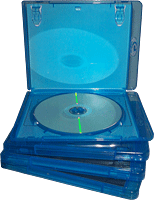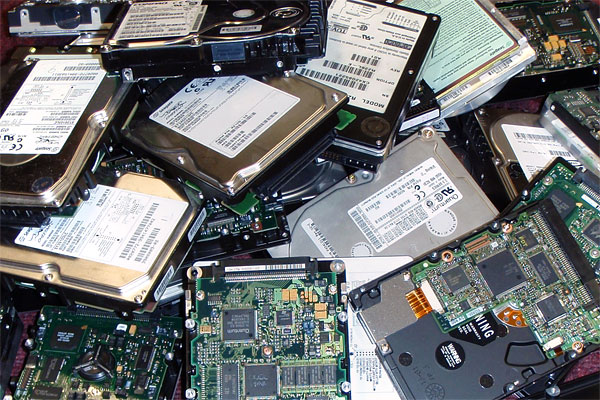The storage conundrum: Can Sony and Panasonic solve photography’s biggest problem?
posted Monday, July 29, 2013 at 1:00 PM EDT

For the last couple of decades, there's been an elephant in the digital darkroom. A joint announcement today from two of Japan's largest consumer electronics manufacturers -- Sony and Panasonic -- suggests that its days may finally be numbered, as the two companies work to create a more viable, long-term archival storage medium.
It has the potential to be huge news. Digital cameras and optics these days are better than ever, providing excellent image quality at very affordable prices. There's a multitude of camera form factors to choose from, and modern cameras offer a vast array of in-camera aids help make sure you get an attractive shot, no matter your experience level. As image quality has improved, though, file sizes have soared. It's not just a problem for pros. Even enthusiastic amateurs -- especially those who favor shooting raw or raw+JPEG routinely -- have collections in the many hundreds of gigabytes or more.
Sure, we still love to see new camera technologies evolving, but if you look at the bigger picture, capture is no longer the key issue for photographers. The big problem is what to do with all those photos once you've captured them. Current choices for archival storage are typically expensive, slow, tedious, unreliable, or some combination of all of the above.

Cloud storage is relatively slow, since it's limited by the bandwidth and latency of your internet connectivity. It's also not the most secure option: All that's needed is a change of corporate direction, or a failure of the business, and suddenly you're left scrambling to get hold of your photos -- if you even get the chance at all. Tape offers huge capacities for relatively low cost, but the drives can be extremely expensive, and by its very nature the medium is slow.
Writable DVDs and Blu-Ray discs are inexpensive, but with much lower capacities, you're left shuffling -- and storing -- multitudes of discs. For a large photo library, the backup process is long and painful, and reliability of the dye-based media on an easily-scratched plastic substrate isn't great either. The M-Disc aims to solve this, but it lags years behind on capacity, with Blu-Ray M-Discs not expected to ship until this fall.
And then, there are hard disks. Treated well these can be reasonably reliable, but they're prone to mechanical failure, and even though they're much cheaper than they once were, they're hardly the most affordable solution. (After all, to protect against possible failure, you'll need multiple drives with copies of the same data.) What photographers need is really big, reliable, fast storage at an affordable cost.

There are, as yet, no promises about speed or affordability, but the announcement from Sony and Panasonic suggests that the two companies are working on the "really big, reliable" part. Thanks to a freshly-signed agreement, they pledge to provide an optical disc for long-term storage, capable of storing at least 300GB. That's somewhere between double and triple what's possible with optical media currently, even when using the highest capacity, multi-layer writable Blu-Ray discs. (And we're holding out hope that 300GB turns out to be a conservative estimate -- the larger the capacity, the fewer discs we'll need to store our photo collections!) Since they're specifically targeting long-term data storage, one would expect that reliability of the new medium would be at the very least acceptable, as well.
The new disc type should, the companies say, be available by the end of 2015 -- to which we say, "Roll on, 2015!" We'll be eagerly awaiting further news, and as it transpires, you can expect to hear about it on our news page. Watch this space!
(Blu-Ray discs image courtesy of FutUndBeidl / Flickr. Data center image courtesy of Beraldo Leal / Flickr. Hard drives image courtesy of Sebastian Dooris / Flickr. All images used under CC BY 2.0 licenses.)